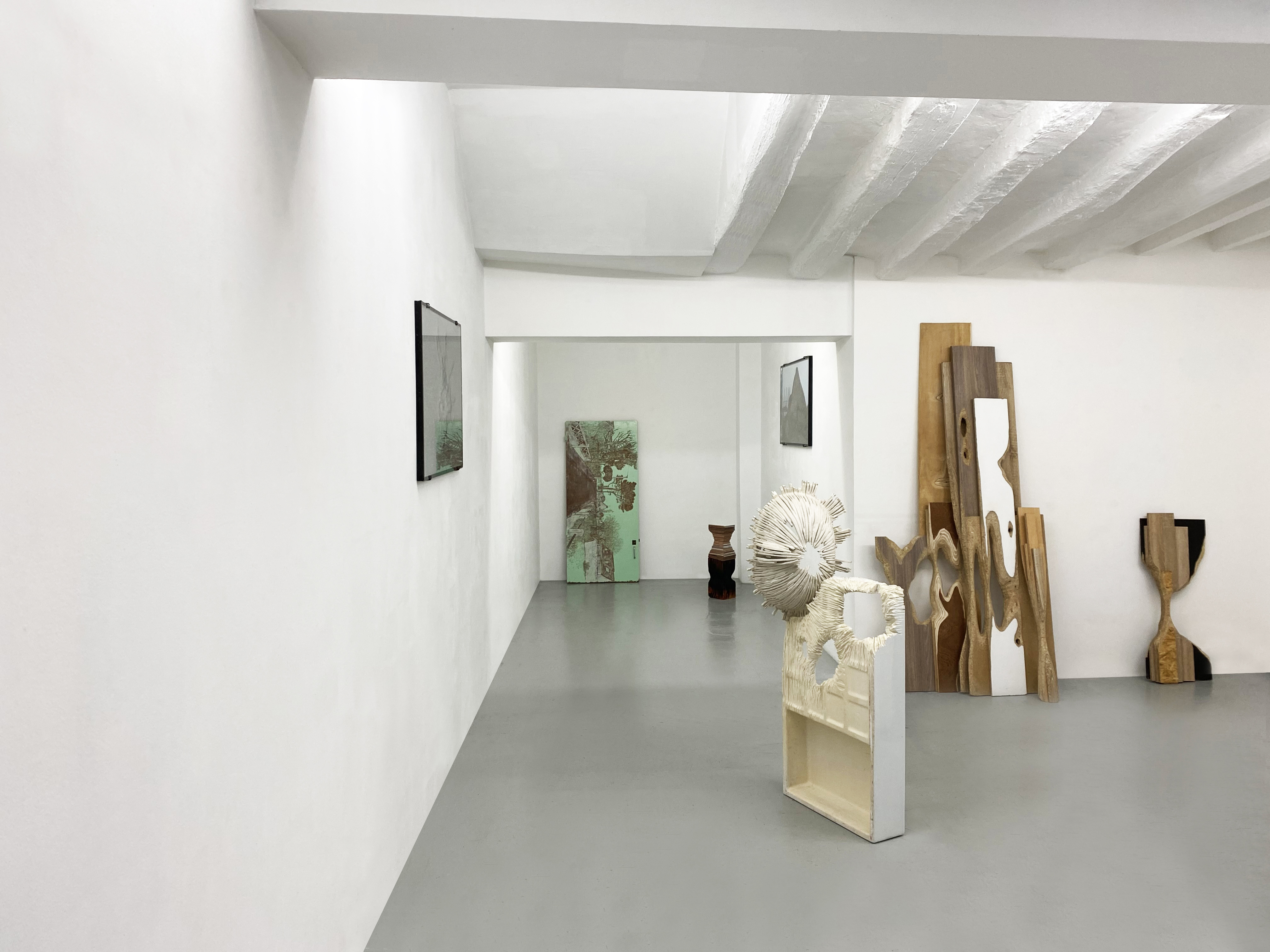
The floorboards of floating parquet are not fastened to the ground, but simply interconnected by grooves and strips. They replace and imitate the aspect of traditional parquets in solid wood, and conceal the original floors deemed unfashionable by their owners. They fall apart after several years due to their poor quality. Once discarded, leaning one against the other along the walls of apartment buildings, they compose an alternation of strata: successive deposits of the emblematic material of our consumerist society. They erode on city streets like “ monsters ” or fantastic creatures in a Floating World.1
Stéfan Tulépo uses everyday, mass-produced items intended to be abandoned, destroyed or disintegrated. They evoke contemporary archaeology, ways of life, and aesthetics. These objects are the raw material of his compositions. He works on their visual qualities, their resistance, their roughness, and transforms them mechanically in an artisanal manner, by rubbing, streaking or piercing them…
The wooden door, the oval in serrated melamine wood and the bread board from the Grattage series were all saved from destruction, gleaned in the course of his travels: the treasures of a miraculous catch. By rubbing or engraving the surface of these objects, he reveals, in the photographic sense of the word, the landscape in which he found them.
Stéfan Tulépo studied visual arts, sculpture and photography, and in his work these three practices come together in a poetic, playful manner. All the images he creates correspond to the ensemble of his work. They produce trains of thought, shifts in meaning and analogies… Continental condenses popular culture and ancestral traditions by confronting artisanat and industry. The sculpted tyre in blue stones is presented like the legend of the Ourlet double, two photographs back to back in the interstice of a double glazed window.
Division de joie consists in five plates divided in two. The diffraction line reveals the earthenware’s porosity. When following the oscillation of the split surface with a finger, you can feel the roughness of the plate’s centre and the cold, smooth enamel of the exterior edge. Placed one in front of the other, in regular intervals, they recompose the mineral décor of a miniature theatre. Qu’il est bo, a siphon cover and a sink in industrial china, lying on a stand of burnt wood, has been sawed with an electric grinder. It is an architectural piece, a tormented landscape petrified like metamorphic rock. These artefacts reproduce the phenomenon of erosion provoked by wind, rain and all the modifications of the terrestrial crust.
Sometimes Stéfan Tulépo reactivates emotional relationships, childhood memories or his happiness in discovering an abandoned object, gleaned along the Brittany seashore, transformed by the ebb and flow of the tides. He has a taste for cultural images charged with powerful affectivity, passing from one object to another and then in turn to the viewers, creating a collective mythology.
He collects images in order to index them in extensive series, each one nourished by new directions. He defines the bonds of parenthood between them all by adopting a system devoid of hierarchy and aesthetic, cultural or geographic distinctions, inspired by the classifications of the art historian Aby Warburg. Each image is the result of movements that are previously sedimented or crystallized, thus, works of palaeontology and geology may be located on the same shelves as works devoted to the memory of gestures and to the unconscious.2
His environment is his field of experimentation. He finds his inspiration there. His outdoor interventions arise from an attentive desire for banal, temporarily abandoned places: he reanimates these non-places through artistic actions and passes their nobility on to us.
Several years ago, Stéfan Tulépo photographed a wall in Morocco, then saved it preciously in his collection of images. The craftsman had drawn horizontal and vertical lines in red chalk to give the illusion of a brick wall. Mur central reproduces this trompe-l’oeil on the side of a mound of earth and rubble in a waste ground in Brussels. This land shift leads to an “ image shift ”.
In Stéfan Tulépo’s work, an idea is constructed through an act, as simply as possible, in order to indicate the fragile nature of things. The artist admires the organic actions of the mud worm, capable of ingesting sand and transforming it into an enriched component: “ threads of moist sediments like a natural bas relief are born from this virtuous cycle. They incarnate the ideal creative process ”.3
Translated in English by Emmelene Landon
2. G. Didi-Huberman, L’image survivante, Histoire de l’art et temps des fantômes selon Aby Warburg.
3. Dixit Stéfan Tulépo
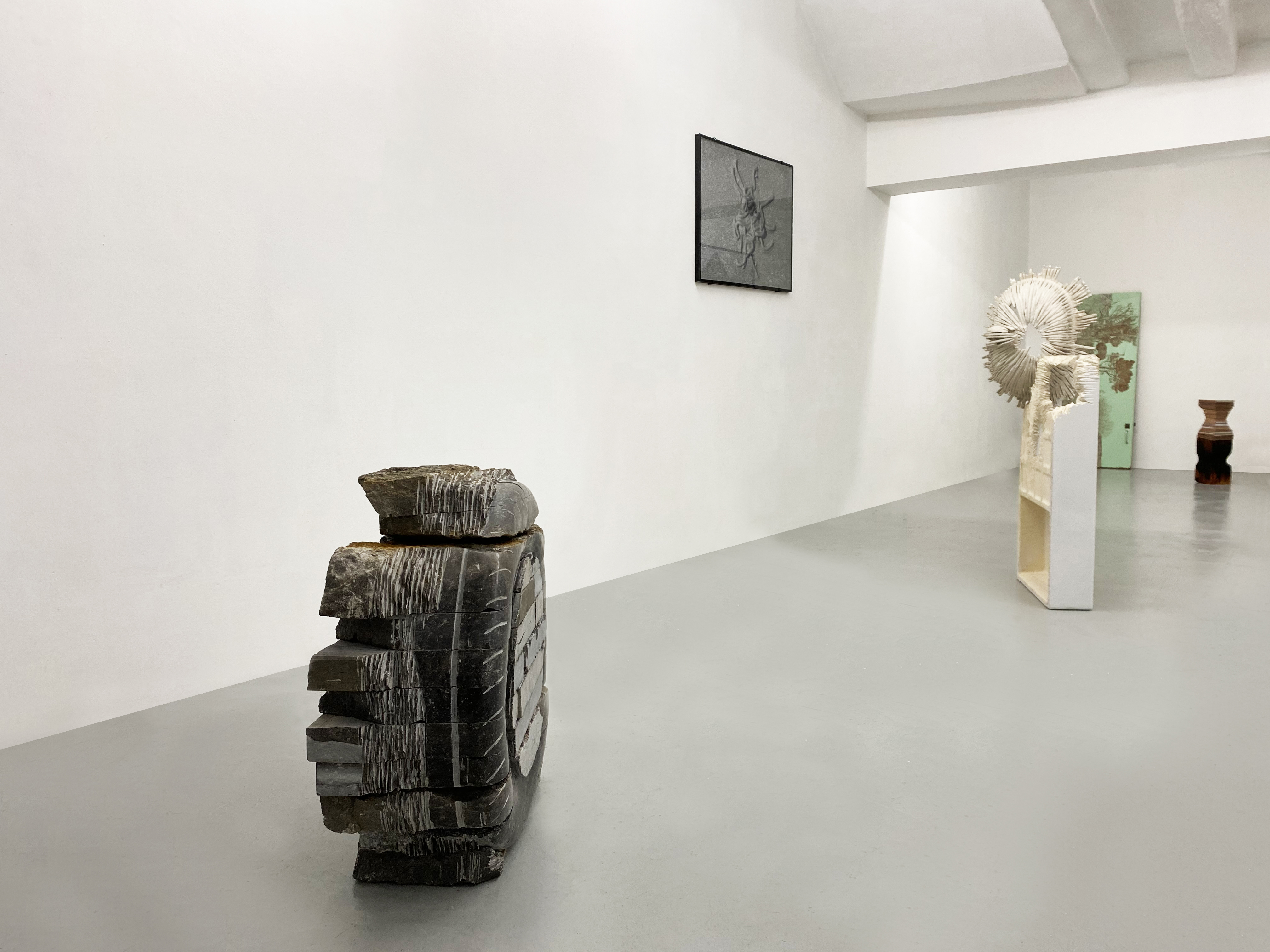
Stéfan Tulépo, Continental, 2021, assembled and sculpted blue stones, 64 x 70 x 29 cm, unique pieces
Buzhuc (series Moulure), 2018, photography, digital printing, Hahnemühle paper 308g, 88 x 48 cm, double glazing, 90 x 50 cm,
metal hooks, unique piece
Qu’il est bo (series Moulure), 2021, siphon cover et carved earthenware, burnt Douglas pine, 50 x 50 x 80 cm, unique pieces
Grattage 22 (series Grattage), 2021, carved composite wood door, 200 x 75 x 4 cm, unique piece
Alto Strato (series Moulure), 2020, pieces of cut tiles and burnt Douglas pine, 15 x 15,5 x 59 cm, unique piece
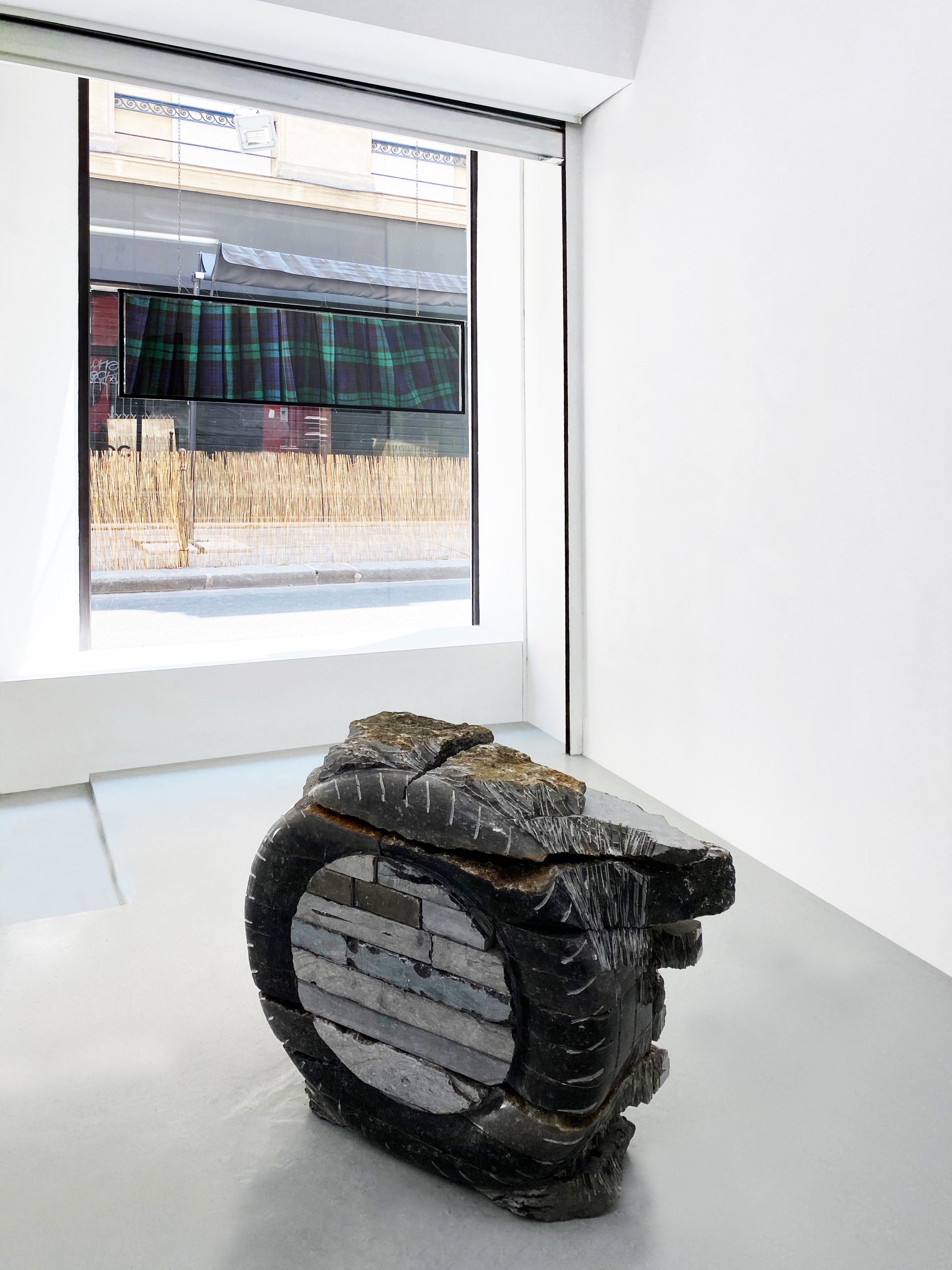
Stéfan Tulépo, Continental, 2021, assembled and sculpted blue stones, 64 x 70 x 29 cm, unique pieces
Ourlet double, 2020, two photographies, digital printing, Hahnemühle paper 308g, 48 x 33 cm,
double glazing, 50 x 35 x 3 cm, unique pieces
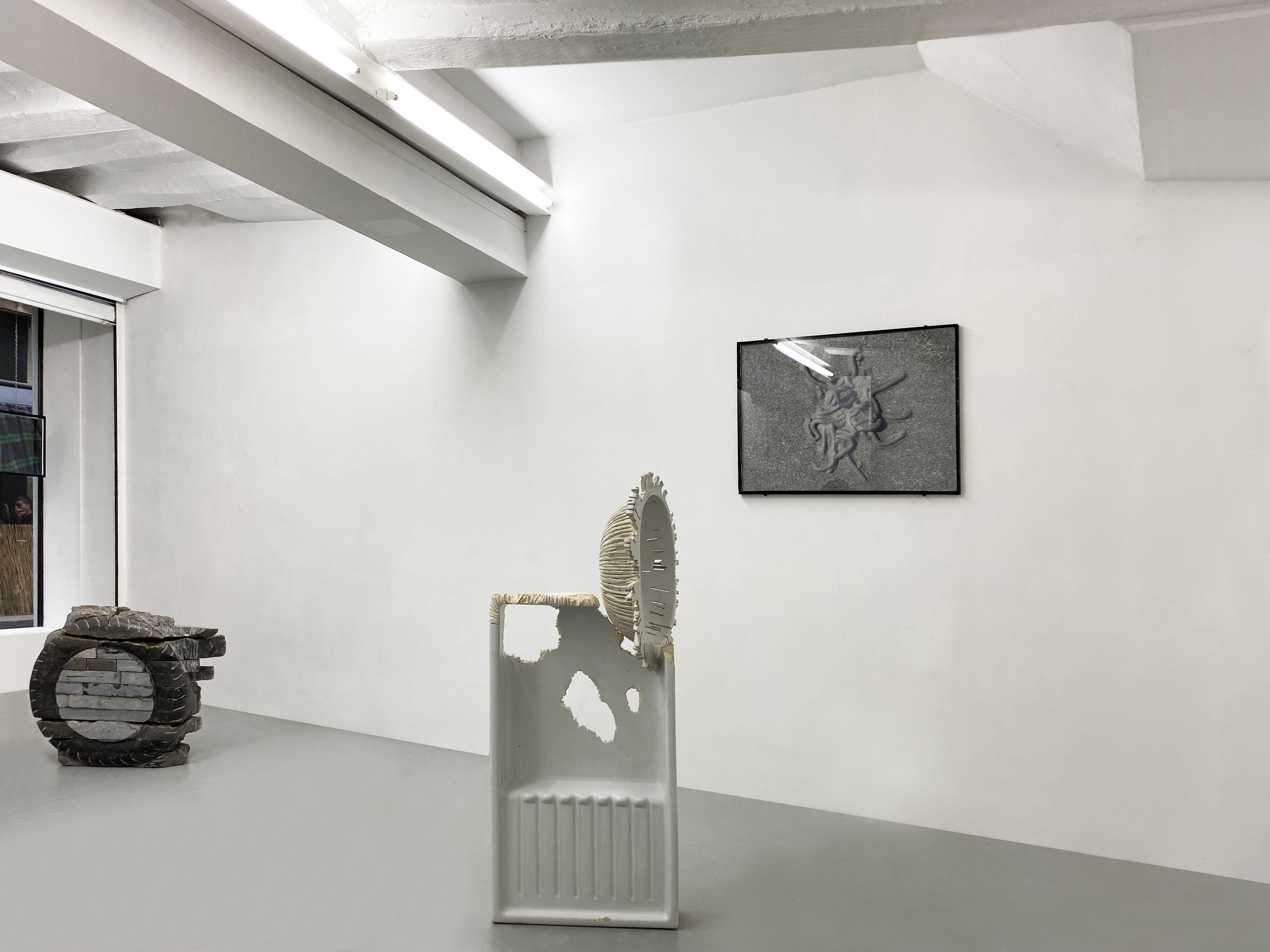
Stéfan Tulépo, Continental, 2021, assembled and sculpted blue stones, 64 x 70 x 29 cm, unique pieces
Qu’il est bo (series Moulure), 2021, siphon cover et carved earthenware, burnt Douglas pine, 50 x 50 x 80 cm, unique pieces
Buzhuc (series Moulure), 2018, photography, digital printing, Hahnemühle paper 308g, 88 x 48 cm, double glazing, 90 x 50 cm,
metal hooks, unique piece
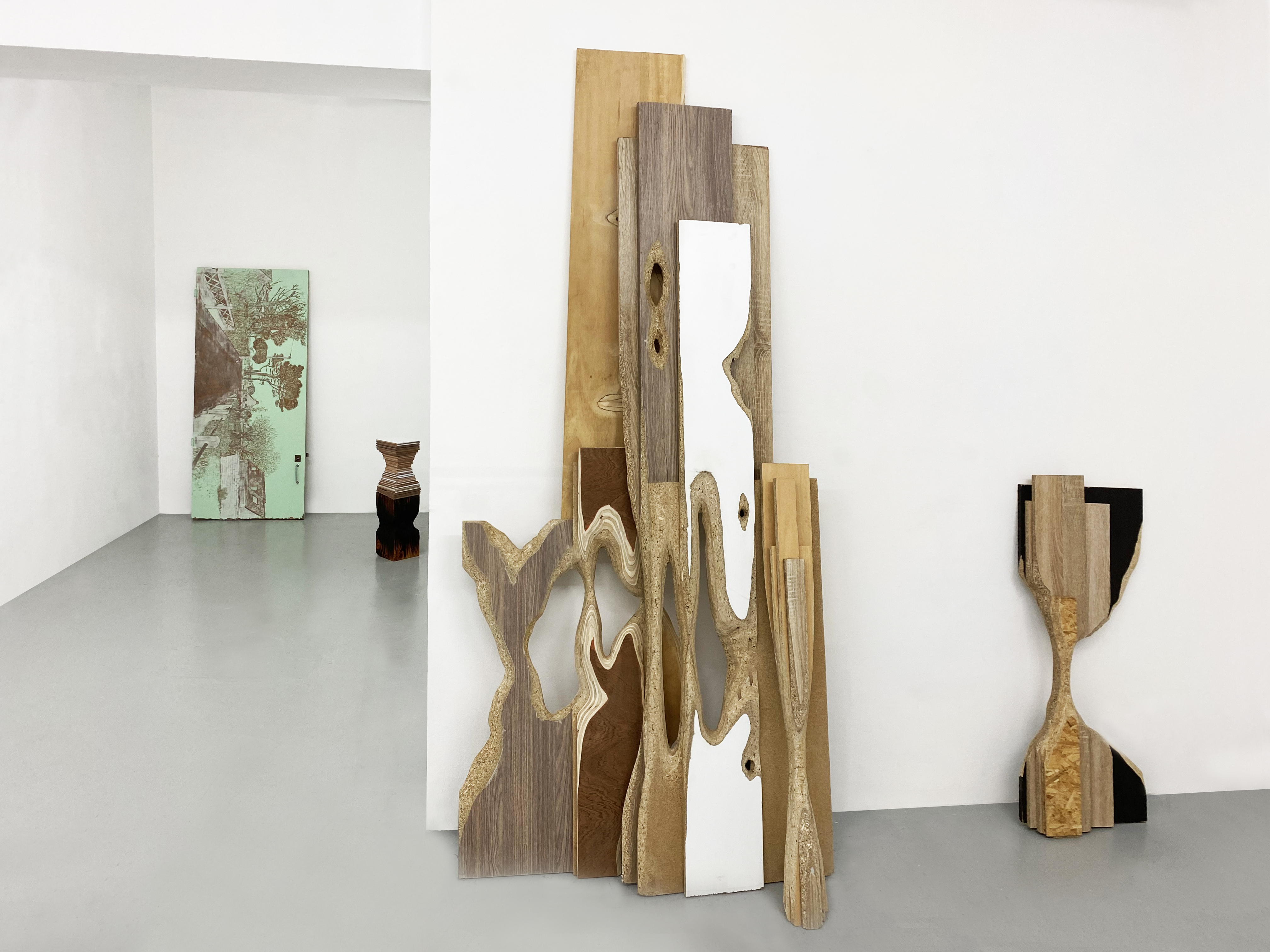
Stéfan Tulépo, Grattage 22 (series Grattage), 2021, carved composite wood door, 200 x 75 x 4 cm, unique piece
Alto Strato (series Moulure), 2020, pieces of cut tiles and burnt Douglas pine, 15 x 15,5 x 59 cm, unique piece
Monstre 1 (series Monstre), 2020, laminated, glued and carved wood boards, variable dimensions, unique pieces
Monstre 1 (series Monstre), 2020, laminated, glued and carved wood boards, variable dimensions, unique pieces
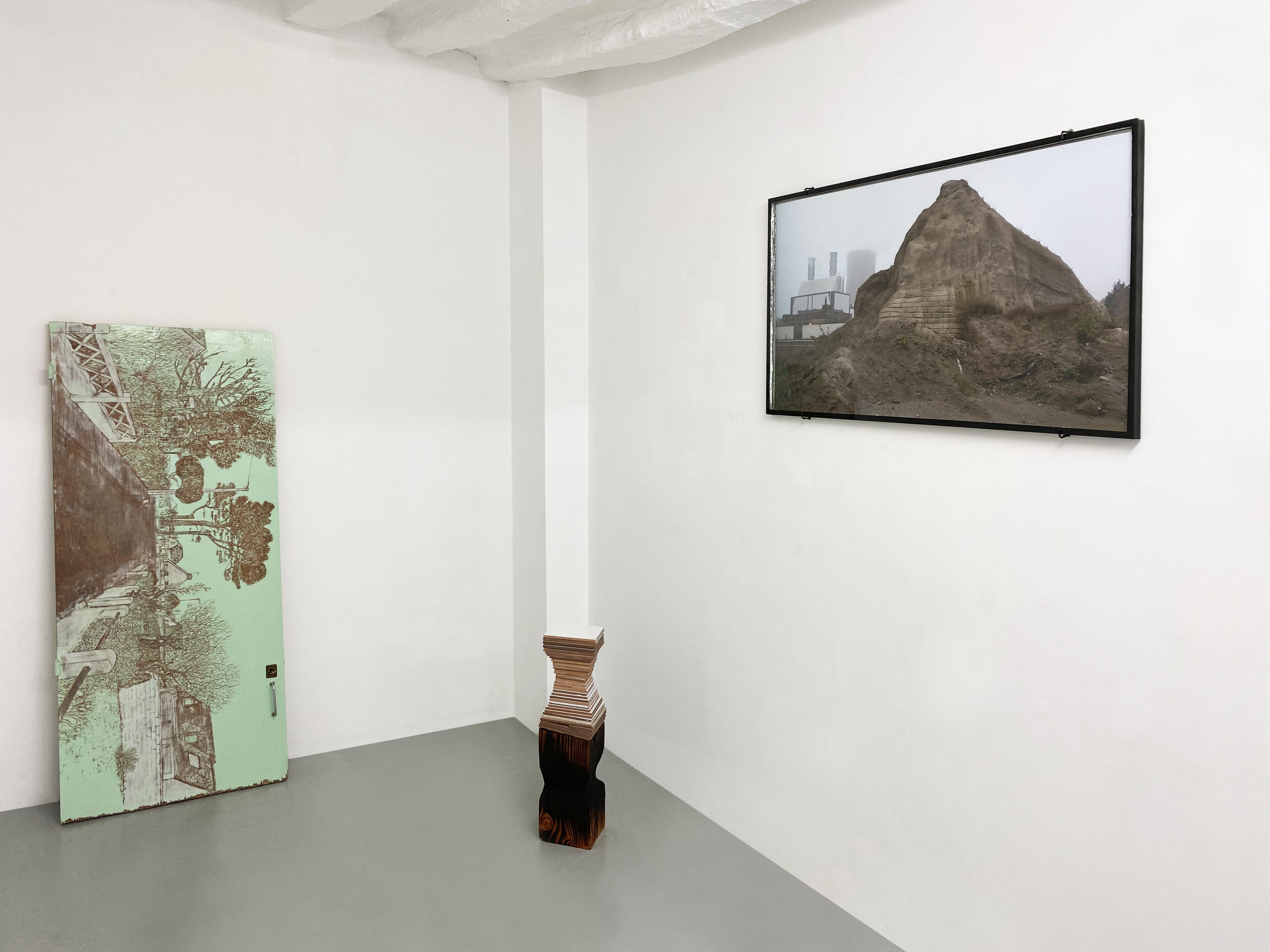
Stéfan Tulépo, Grattage 22 (series Grattage), 2021, carved composite wood door, 200 x 75 x 4 cm, unique piece
Alto Strato (series Moulure), 2020, pieces of cut tiles and burnt Douglas pine, 15 x 15,5 x 59 cm, unique piece
Mur central (series Monstre), 2020, photography, digital printing, Hahnemühle paper 308g, 118 x 58 cm, double glazing, 120 x 60 cm, unique piece
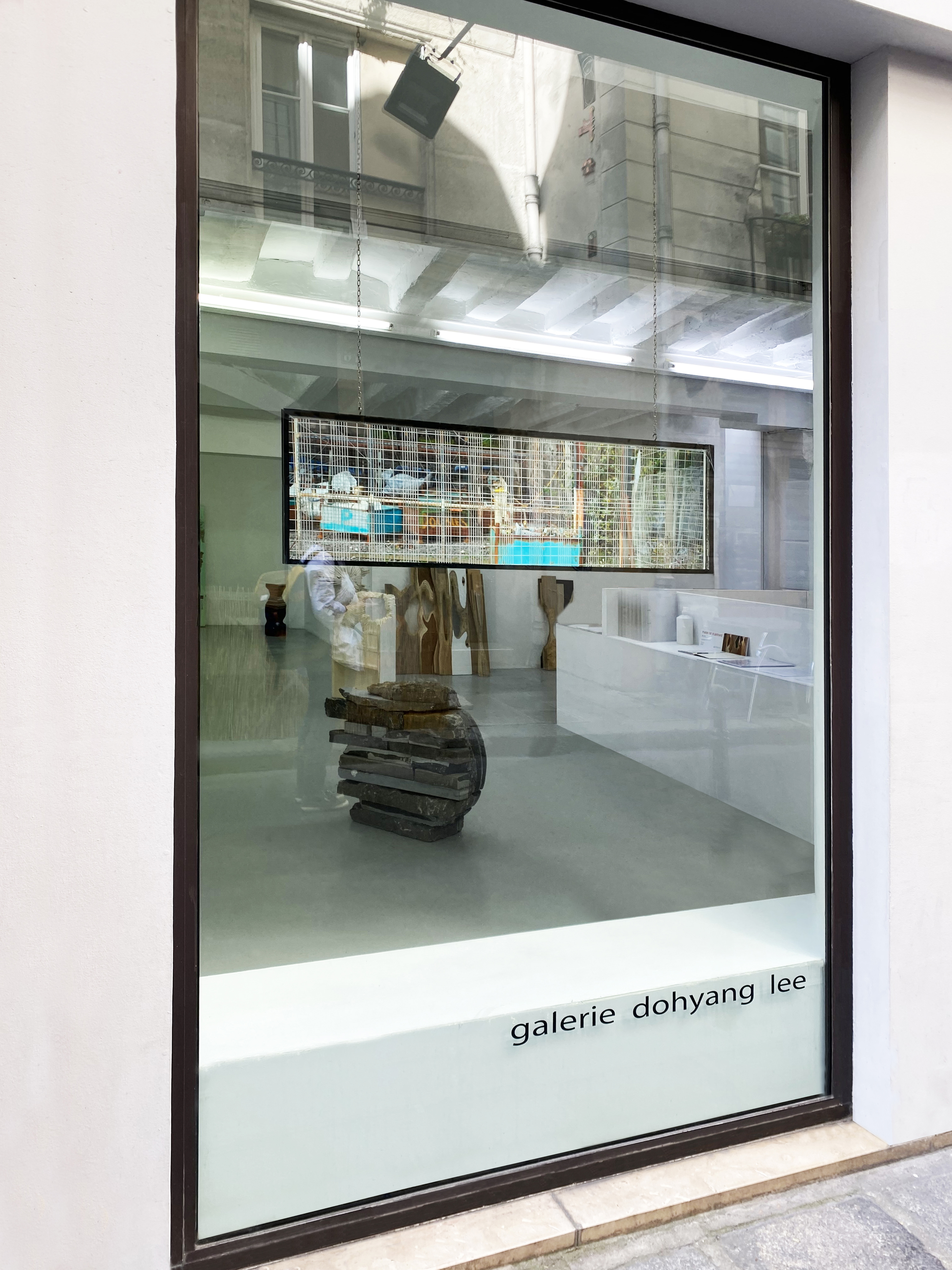
Stéfan Tulépo, Continental, 2021, assembled and sculpted blue stones, 64 x 70 x 29 cm, unique pieces
Ourlet double, 2020, two photographies, digital printing, Hahnemühle paper 308g, 48 x 33 cm,
double glazing, 50 x 35 x 3 cm, unique pieces
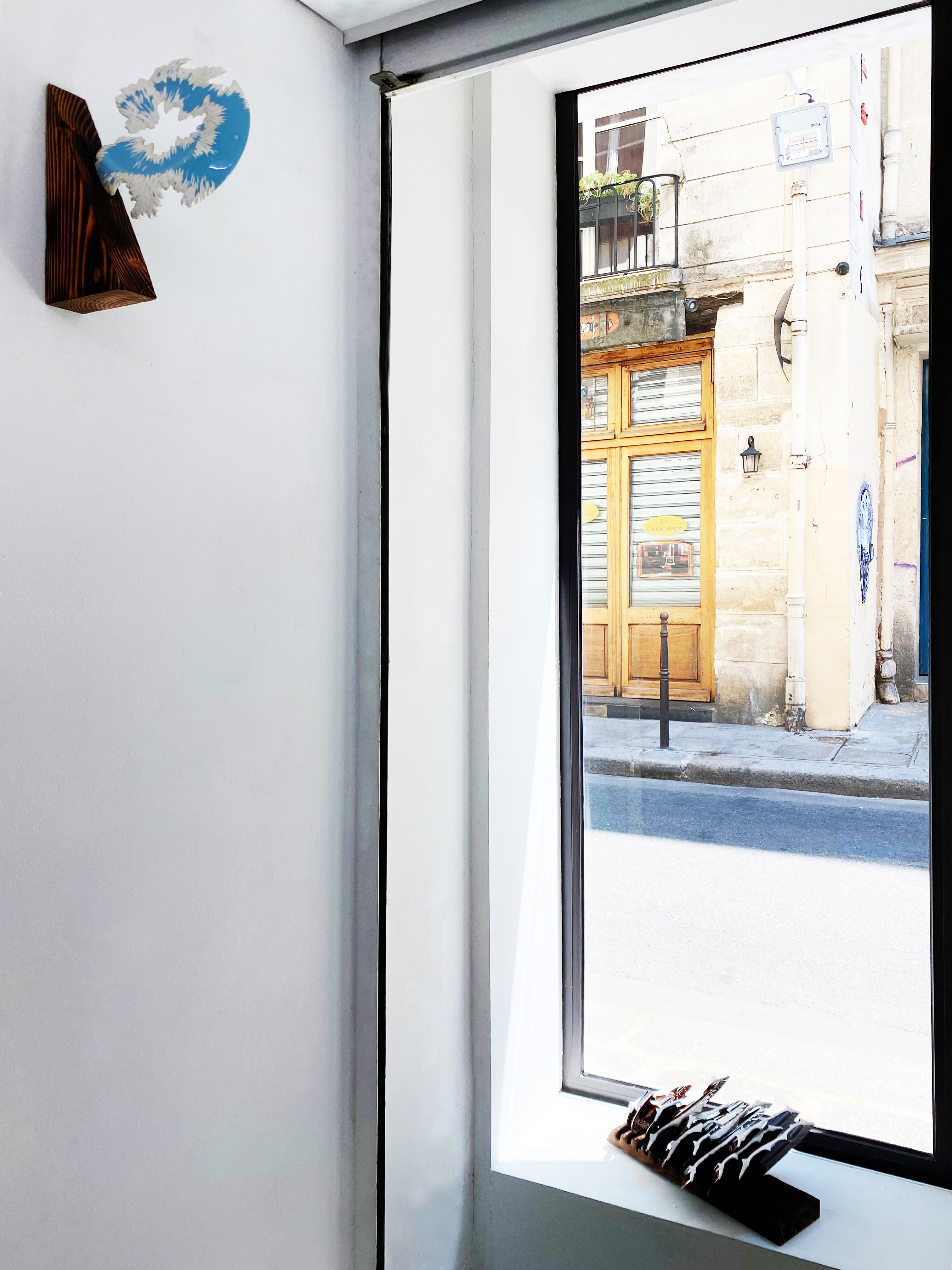
Stéfan Tulépo, Bleu masque (série Moulure), 2021, carved earthenware plate and burnt Douglas pine,
35 x 35 x 5 cm, unique piece
Division de la joie (série Moulure), 2021, cut earthenware plates and burnt Douglas pine,
45 x 30 x 28 cm, unique pieces
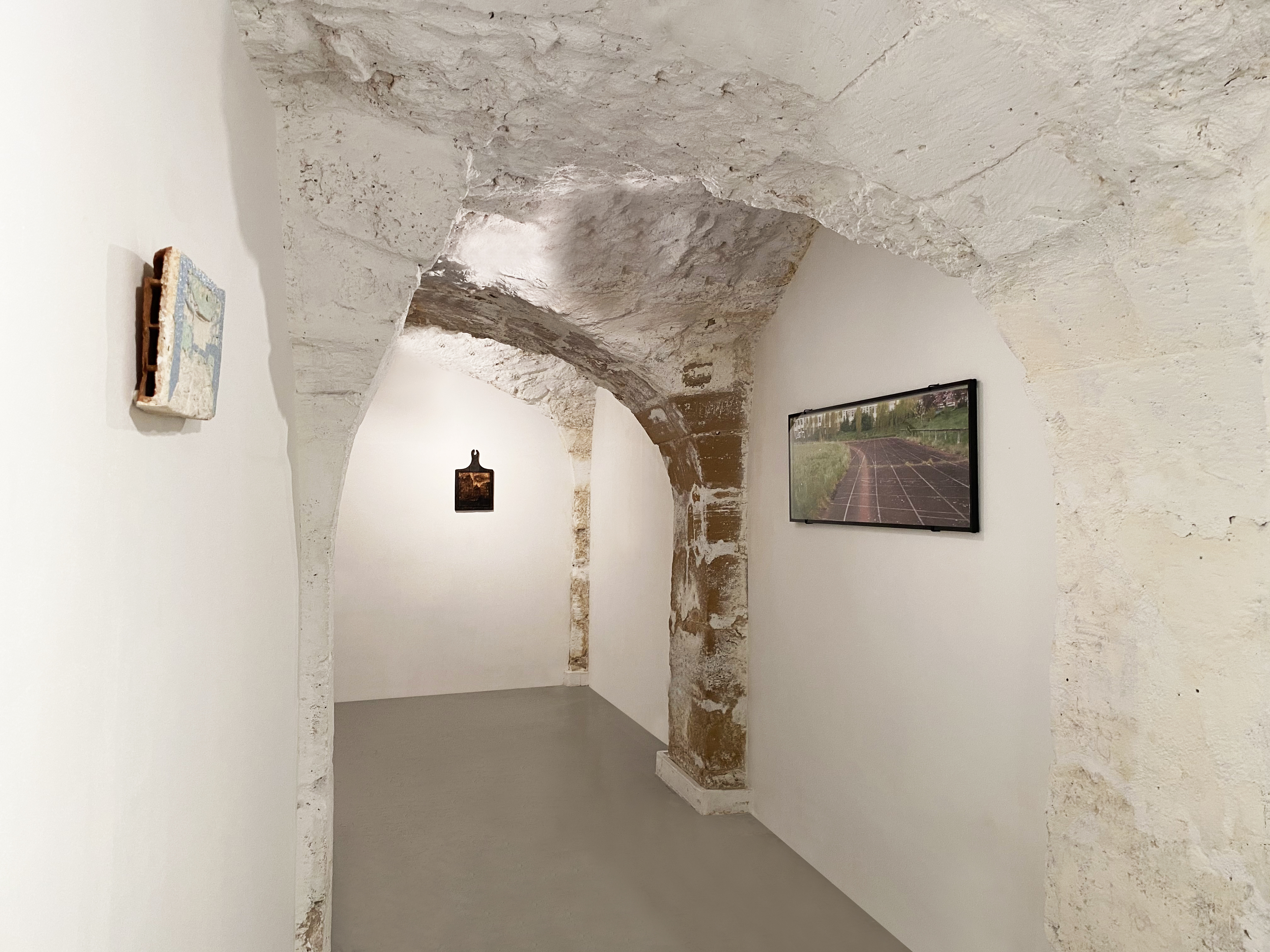
Stéfan Tulépo, Grattage 1 (série Grattage), 2013, brick, pigments, 35 x 50 cm, unique piece
Grattage 5 (série Grattage), 2020, carved wooden bread cutting board, 35 x 40 cm, unique piece
Essuis glace (series Grattage), 2021, photography, digital printing, Hahnemühle paper 308g, 68 x 43 cm, double glazing, 70 x 45 cm,
metal hooks, unique piece
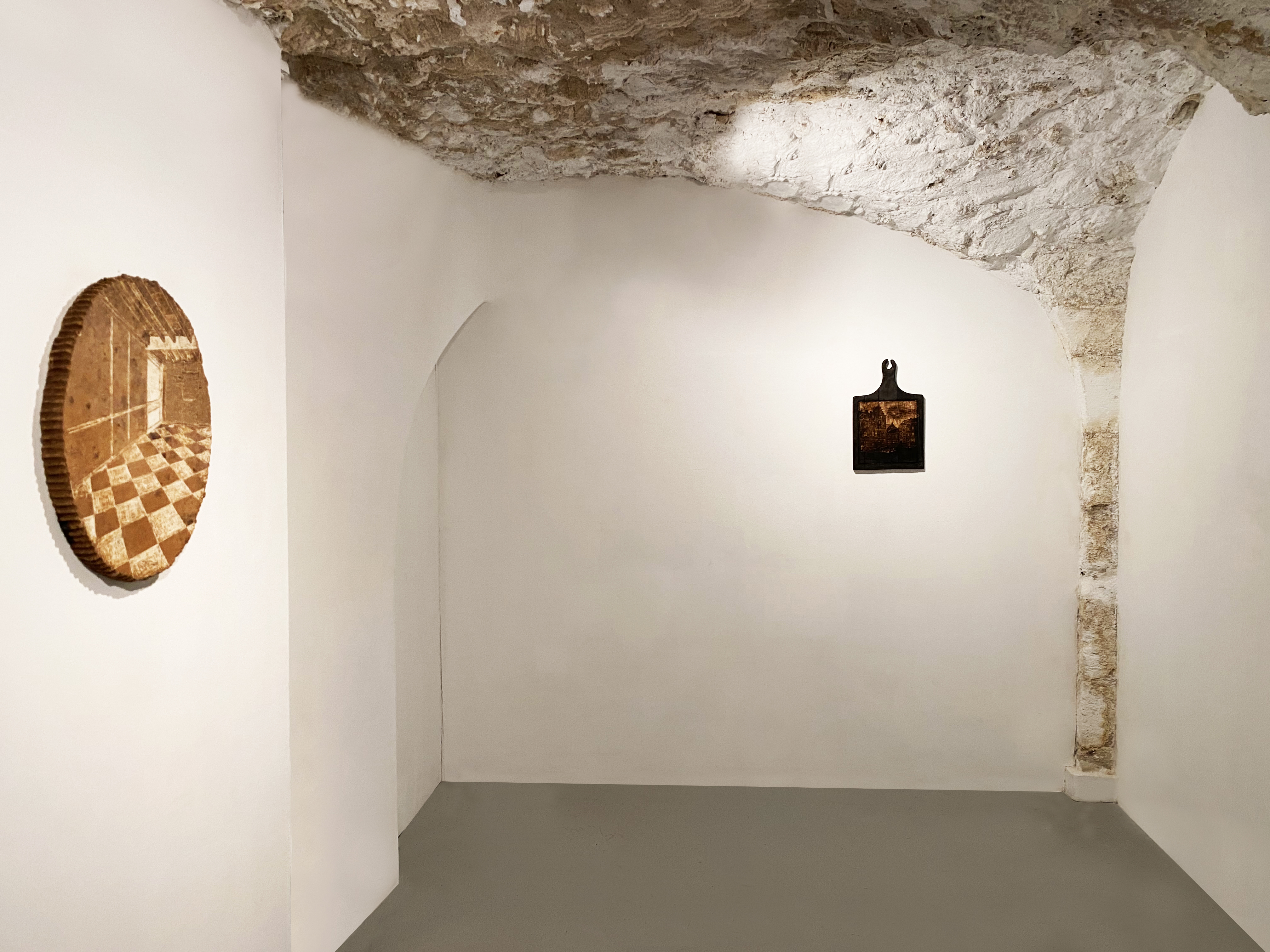
Stéfan Tulépo, Grattage 12 (série Grattage), 2013, carved laminated wood, 40 x 50 x 8 cm, unique piece
Grattage 5 (série Grattage), 2020, carved wooden bread cutting board, 35 x 40 cm, unique piece
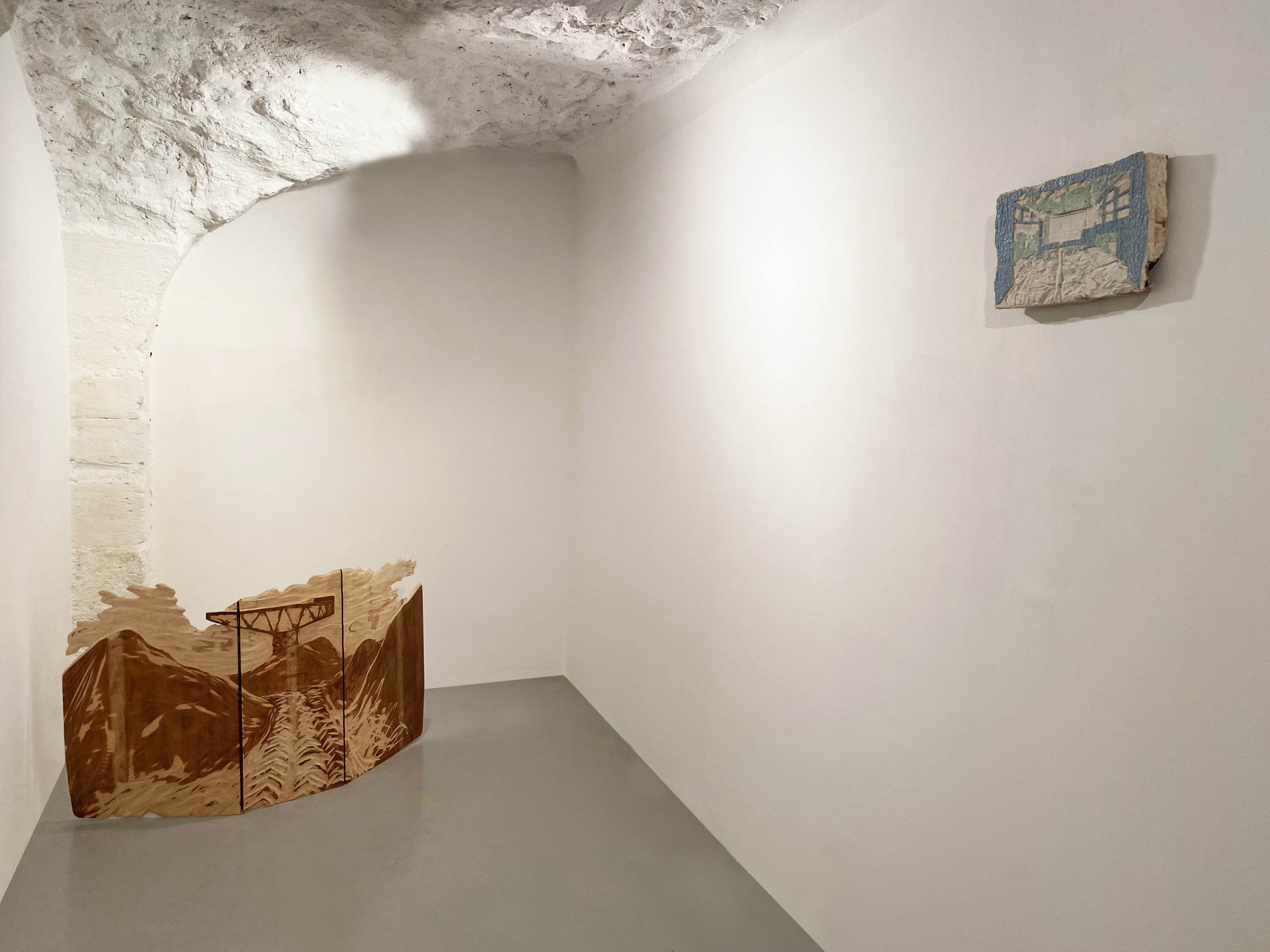
Stéfan Tulépo, Grattage 13 (série Grattage), 2020, carved table, 130 x 55 cm, unique piece
Grattage 1 (série Grattage), 2013, brick, pigments, 35 x 50 cm, unique piece
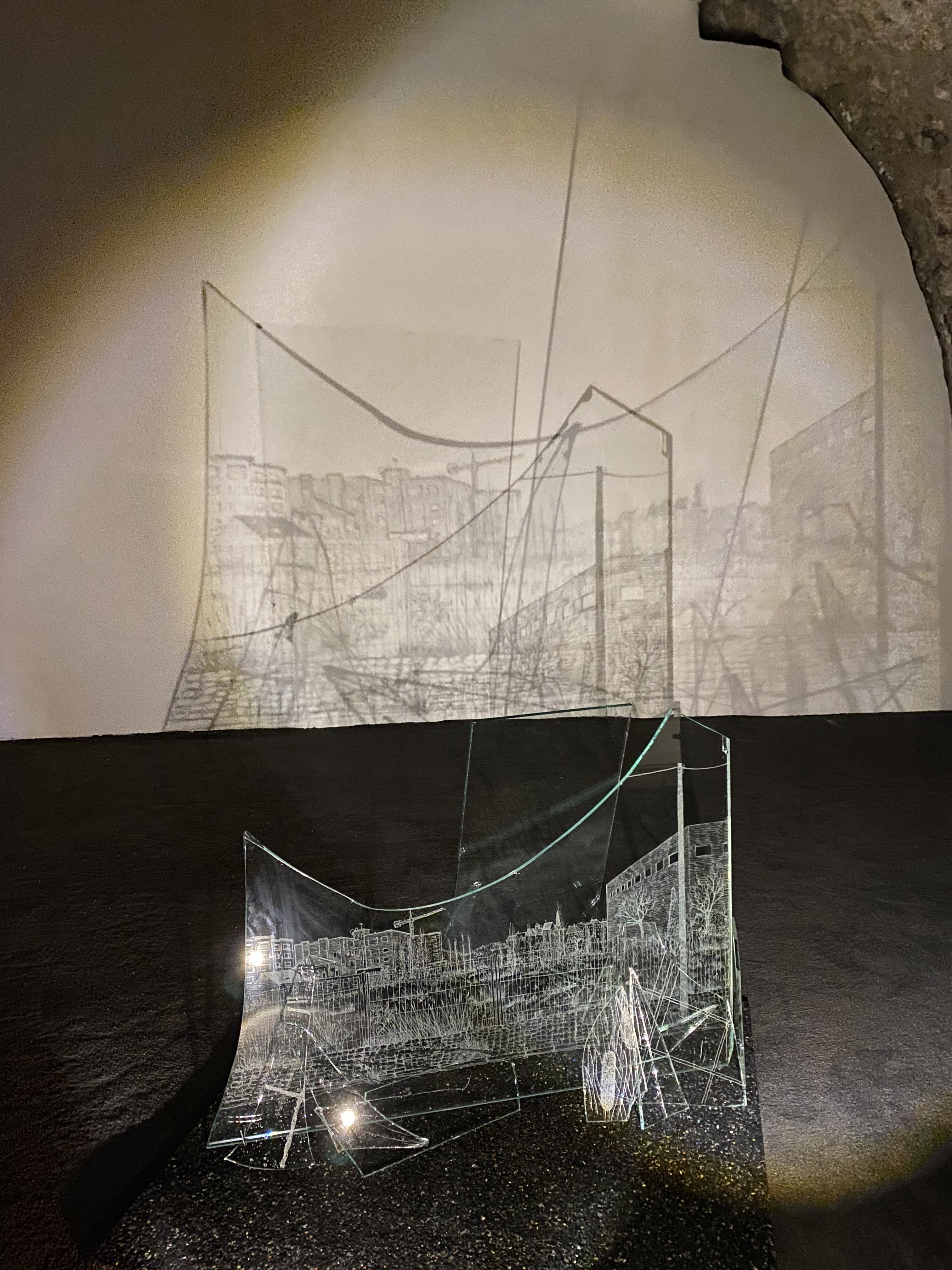
Stéfan Tulépo, Grattage 21 (series Grattage), 2020, carved mirror
(exposed on a white basement with a light projection), 40 x 55 cm, series of unique pieces
73-75 rue Quincampoix 75003 Paris France
Tuesday – Saturday 2 pm – 7 pm and with rendez vous
tel : +33 (0)1 42 77 05 97
www.galeriedohyanglee.com
